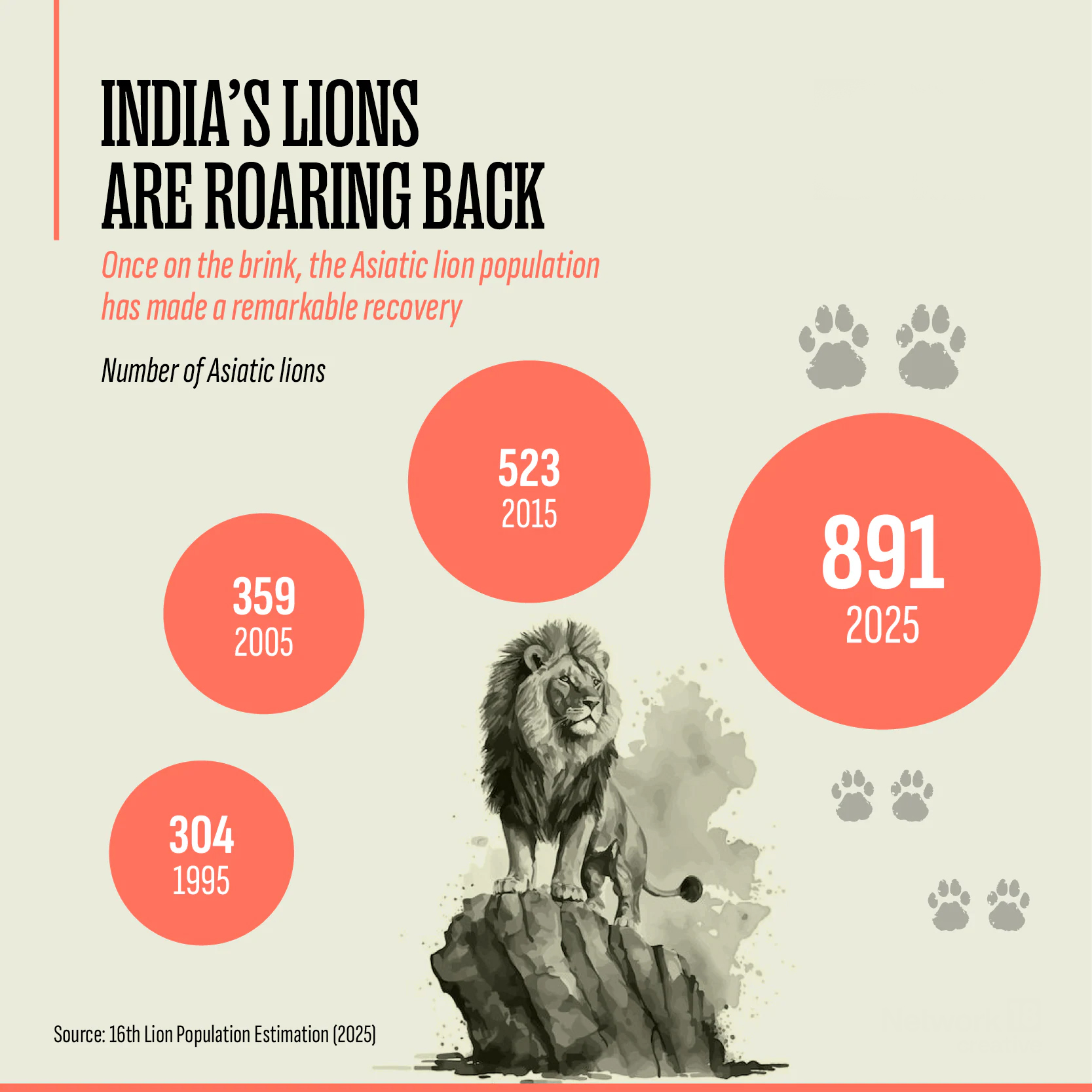Context:
According to the 16th Lion Population Estimation Report (2025), India’s Asiatic lion population has increased from 674 in 2020 to 891 in 2025, a significant 32.2% rise. This conservation success highlights the effectiveness of habitat management and protection efforts in Gir National Park and Wildlife Sanctuary, Gujarat the only habitat of Asiatic lions globally.
Key Highlights:
· Population Growth: The Asiatic lion population has surged by 70.36% over the past decade, from 523 in 2015 to 891 in 2025.
· Area Expansion: The area of distribution has expanded by 59.09% during the same period.
· Adult Female Growth: The number of adult females has grown from 260 to 330, a 26.9% increase, bolstering the species' reproductive capacity.

Regional Distribution:
· Amreli District: Currently holds the highest number of lions, with 82 adult males, 117 adult females, and 79 cubs.
· Mitiyala Wildlife Sanctuary: Recorded the sharpest growth, with a 100% increase in lion population.
· Bhavnagar Mainland: Saw an 84% increase, while the South Eastern Coast recorded a 40% growth.
· Declining Zones: Girnar Wildlife Sanctuary (-4%) and Bhavnagar Coast (-12%) show marginal declines, reflecting possible stress from human-wildlife interactions.
Challenges:
- Despite the growth, experts express concern over changing lion behaviour due to increasing proximity to human settlements. Only 20% of lions now reside in the 258 sq. km core area of Gir, while the majority live in the buffer zones and surrounding areas, where they prey on livestock or consume human-disposed carcasses.
- A 2025 study by the Wildlife Institute of India, Gujarat Forest Department, and partners found lion attacks on livestock have risen by 10% per year, with livestock losses per village increasing by 15% annually.
About Asiatic Lion:
The Asiatic lion (Panthera leo persica) is a distinct subspecies found exclusively in Gir National Park, Gujarat. Smaller than the African lion, it is known for a distinct belly fold and a less prominent mane. It is the only wild population of this species in the world, making its conservation a global priority.
Conservation Status and Legal Protection
Asiatic lions are classified as Endangered on the IUCN Red List, listed in CITES Appendix I, and protected under Schedule I of the Wildlife (Protection) Act, 1972. These classifications reflect their vulnerability and the need for strict conservation.
Conservation Efforts and Habitat Expansion
India’s focused efforts under Project Lion and the Asiatic Lion Conservation Project aim to strengthen habitat, prevent disease, and expand the population. Lions have moved beyond Gir into Barda Wildlife Sanctuary and surrounding areas, with their population monitored through regular censuses.
Conclusion:
The significant growth of India's Asiatic lion population is a testament to the country's dedication to wildlife conservation. With continued efforts under Project Lion and the Gujarat government's leadership, the future of this majestic species looks promising. However, addressing the challenges of human-lion conflict and ensuring sustainable coexistence will be crucial for the long-term survival and prosperity of the Asiatic lion.






